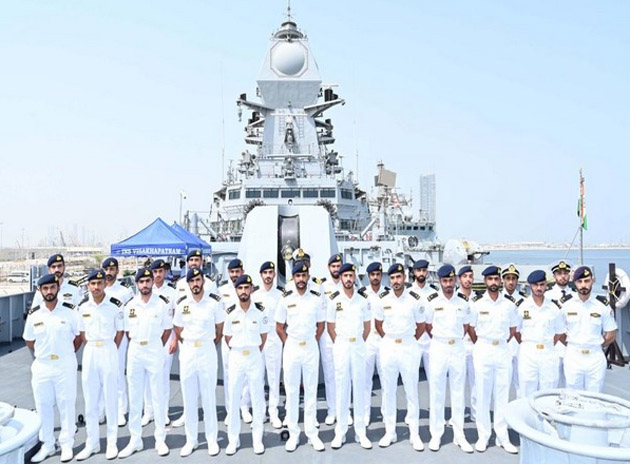By Girish Linganna
The Indian Navy is currently conducting its largest-ever deployment in the Gulf of Aden and Western Arabian Sea. This mission operates independently of the US-UK military campaign against Iran-backed Houthi rebels in Yemen.
An unprecedentedly large Indian Navy fleet of 12 warships is now operating in the region, with two advanced vessels in the Gulf of Aden and the remaining 10 in the Northern and Western Arabian Sea. This deployment is much larger and more powerful than those in the past. In contrast to its previous focus on defence and localized operations, the Indian Navy has been deployed with significantly enhanced resources and a wider mission scope amid the present regional challenges.
The Indian Navy’s primary focus is to stop piracy and hijacking in the region. The navy has also deployed a substantial special operations force to support this mission. After almost six years of quiet, there has been a sudden increase in pirate attacks in the Gulf of Aden and the Northern and Western Arabian Sea. This resurgence of piracy directly reflects the ongoing instability in West Asia, requiring the Indian Navy to maintain a state of heightened vigilance.
Pirate groups based in Somalia were very active between 2008 and 2018. However, since 2018, there were almost no pirate attacks until late-2023. But, taking advantage of the regional instability created by the Israel-Hamas conflict and Houthi attacks on commercial vessels, pirates have resurfaced in the Gulf of Aden and the Red Sea. While the recent increase in pirate attacks is a cause of concern, the frequency and severity of these incidents are still significantly lower than the peak observed between 2008 and 2018.
The sheer size of the 2.5-million-square-nautical-mile (85.75-lakh-square-kilometre) area—almost the size of Argentina—targeted for anti-piracy operations underscores the challenges for any individual navy. However, the Indian Navy’s present deployment signals an evolution in both capacity and expertise, allowing for effective and decisive counter-piracy actions across this wide maritime expanse.
During the late-2000s, the Indian Navy’s presence in the North-Western Arabian Sea and the Gulf of Aden was insufficient to fully address piracy threats. Single-ship deployments achieved limited success, revealing a need for greater resources and stronger cooperation with East African nations, the Gulf Cooperation Council (GCC) and other navies for effective counter-piracy operations.
The current deployment surpasses the scale of its initial 2008 anti-piracy operations in the Gulf of Aden. India now boasts the largest naval presence off the East African coast and in the Gulf of Aden. This assertive posture reflects a change within the Indian Navy, demonstrating greater operational confidence and expanded capabilities.
External Affairs Minister S Jaishankar emphasizes India’s geopolitical responsibility with this statement: “Inaction during regional instability would undermine our standing as a responsible nation.” This underscores New Delhi’s commitment to shouldering a greater role in safeguarding commercial shipping and maintaining open, vital waterways.
With pirate attacks having significantly impacted shipping and resulting in hostage situations, the Indian Navy has taken decisive action in response, demonstrating its ability to effectively counter these threats and protect lives. This marks a clear shift in capability and engagement compared to past operations. Examples include the successful MARCOS rescue operation aboard the Liberian-flagged vessel bound for Bahrain and the Indian Navy’s swift response to the Houthi missile attack on a UK-linked tanker.
Following earlier actions, the Indian Navy patrol vessel, the INS Sumitra, played a key role in rescuing two hijacked vessels off Somalia’s coast in late-January. These back-to-back operations successfully neutralized piracy threats targeting Iranian-flagged ships with both Iranian and Pakistani members of the crew. The Indian Navy’s actions clearly demonstrate their quick response capabilities and sustained ability to execute challenging maritime missions. (IPA )


